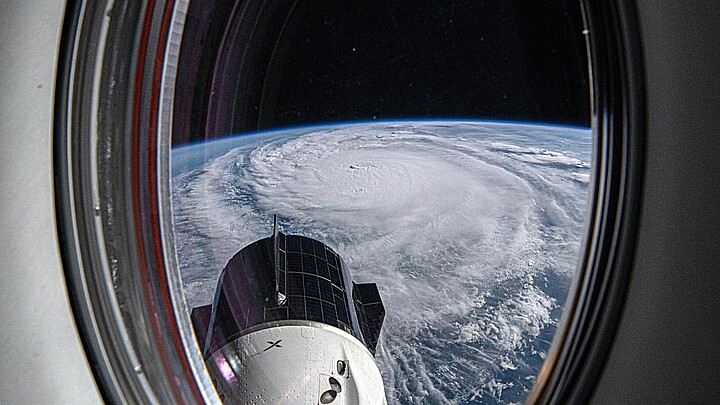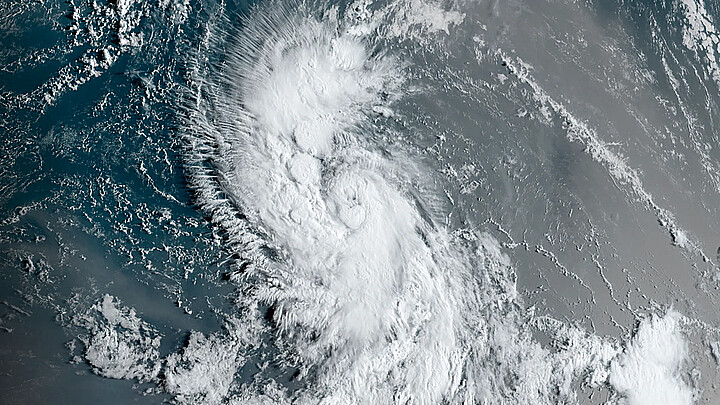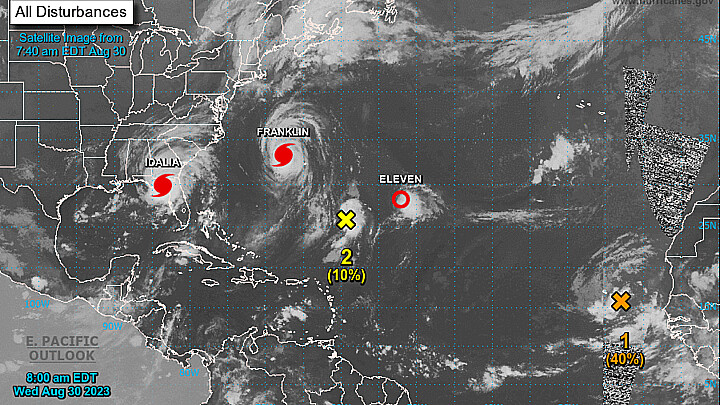Climate
Hurricane Ian leaves wake of fatalities and 2.4 million power outages across Florida as it weakens to tropical storm
DeSantis declares emergency as number of fatalities are uncertain. Biden approves major disaster declaration for Charlotte, Collier, DeSoto, Hardee, Hillsborough, Lee, Manatee, Pinellas and Sarasota counties
September 29, 2022 9:37am
Updated: September 29, 2022 1:24pm
Ian’s winds slowed to 65 mph on Thursday morning, diminishing the hurricane to a tropical storm as it drifted across central Florida and out toward the Atlantic Ocean. The storm originally made landfall on Florida's west coast on Wednesday as a powerful Category 4 hurricane.
Florida Gov. Ron DeSantis declared a state of emergency, and President Joe Biden has approved a major disaster declaration for Florida residents in Charlotte, Collier, DeSoto, Hardee, Hillsborough, Lee, Manatee, Pinellas and Sarasota counties.
"We have fatalities in the hundreds," Lee County Sheriff Carmine Marceno said during an interview with ABC News’ “Good Morning America,” adding he couldn't confirm specific numbers. DeSantis said he could not confirm those numbers, however, and that authorities suspect that may stem from the high number of 911 calls that came in during the storm.
More than 2.4 million power outages as FPL struggles to restore electricity
More than 2.4 million Florida homes and businesses lost electrical power from the storm, said DeSantis during a 9 a.m. press conference from Tallahassee. The U.S. outages followed a nationwide blackout in Cuba after the hurricane struck the western side of the island, leaving behind both nationwide electrical and mobile internet connectivity problems.
In Florida, electrical power was restored to 502,100 residents as of 5 a.m. Thursday while some residents may remain without power “because portions of the electric system in Southwest Florida will need to be rebuilt rather than repaired,” according to Florida Power & Light Company (FPL).
The Florida power utility company has increased its work crew force to more than 20,000 people, including linemen from 30 other states, as it works to restore power to 1.2 million other residents. About 2.5 million people were ordered to evacuate southwest Florida before the hurricane made landfall, but under Florida law, authorities could not force residents to do so.
“Hurricane Ian has forever altered the lives of so many of our fellow Floridians and we recognize the road to recovery will be long and challenging,” FPL CEO and Chairman Eric Silagy said in a statement.
Major structural damage to the Sanibel Causeway
There was also significant structural damage, namely to the Sanibel Causeway and possibly to the Matlacha Bridge, which connects Pine Island to the mainland in Cape Coral in the Fort Myers area, DeSantis said during his press conference.
Reports indicated the storm destroyed a section of the Sanibel Causeway, a 12-mile stretch of road that rises into a bridge to connect Sanibel Island and Captiva with mainland Florida, cutting off ground vehicles. Sanibel is a small island which is home to about 7,500 people.
Images have shown collapsed sections of the bridge with missing parts of the causeway as many as dozens of feet long. According to a report from the Tampa Bay Times, the missing section is just before the bridge rises up toward the island.
In his interview with GMA, Sheriff Marceno said the storm had been very unpredictable, leaving officials constantly tracking Ian because they weren’t certain which way it would travel.
“This is a life-changing event for all of us. We tracked that storm up the coast of Florida, it was very unpredictable,” the Sheriff told the national news network.
“We didn't know where it would hit. I can tell you it came into Lee County strong and it was slow moving,” he explained, adding that at this time law enforcement was still uncertain as to the precise number of fatalities in the area because some people were trapped and authorities are having difficulty accessing “crushed” areas to access people in need.
Ian downgraded to tropical storm as it drifts toward Atlantic
A day after Ian made landfall as one of the strongest hurricanes to ever hit the United States with 150 mph winds on Wednesday, it weakened as it drifted across the Florida Peninsula, finally being downgraded to a tropical storm at 5 a.m. Thursday.
It is expected to move into the Atlantic Ocean sometime on Thursday, but continue flooding rains, strong winds and storm surge across part of Florida, Georgia and the Carolinas, according to reports from The Weather Channel.
Federal authorities in Washington are already preparing aid packages for those who were severely affected.
“Assistance can include grants for temporary housing and home repairs, low-cost loans to cover uninsured property losses, and other programs to help individuals and business owners recover from the effects of the disaster,” the White House said.











